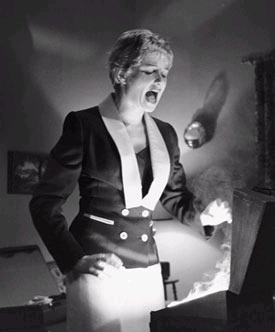“Adaptation is a profound process. Means you figure out how to thrive in the world.“–from the film Adaptation.
For those of you who don’t know–and you really, really, should, considering he’s been writing provocative science fiction, horror, and whatever else for three decades–John Shirley is an adapter. In the 1970s, Shirley was a pivotal figure in the punk underground in Portland, Oregon, antagonizing, engaging, and spreading the virus of ideas and sounds in bands like SadoNation. In 1977, Shirley and another local musician, Mark Sten, opened up the city’s first punk club (albeit an illegal one), The Revenge. Shirley subsequently left Portland for New York City, where he continued to work as a novelist during the day and chart sonic waters at nights with the band Obsession. Later on he played with The Panther Moderns and wrote a number of songs for Blue Oyster Cult, most notably on the underrated album Heaven Forbid.
His novels are strident, erratic, sincere, violent, thought-provoking, rubbish, and brilliant. His short story collections–Heatseeker, Neo Noir, Black Butterflies, and Really, Really, Really, Really Weird Stories–are probably the best place to start if you’ve never read him. And then check out the novels City Come A-Walkin’ and the Eclipse (Song of Youth) trilogy. Oh yeah, he also wrote the first draft for The Crow movie before horror/noir writer David J. Schow (another fine scribbler in his own right) took over.
Anyway… read Shirley. Without him there would’ve been no William Gibson (certainly not in the shape that he took on), and arguably the “punk” in cyberpunk would have been muted if not terminated all together. The above video* is Shirley with Portland noise/experimental musical pranksters Smegma from, I would guess, late, late 1970s or very early 1980s.
Doesn’t matter what time it is. It’s timeless absurdity.
* The alien subgenius intelligence that posted this video to YouTube would not allow me to replicate it here on this site. But you can simply go there and view it for yourself:
http://www.youtube.com/watch?v=bHh95hICPiM
Enjoy….



